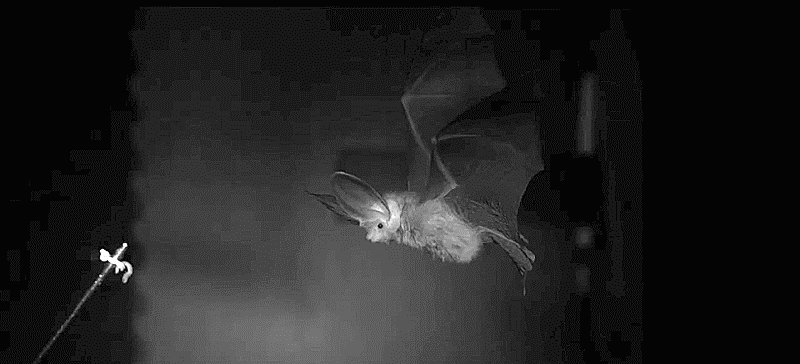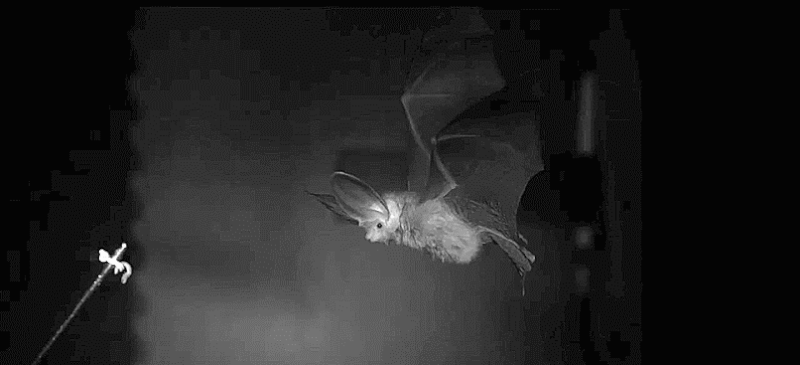
Sweden’s Lund University is studying bats to figure out, among other things, how they fly so well with those big ears in the way. Turns out their unique “design” might be a good blueprint for helping drones make low-speed maneuvers.
The way this experiment works, as explained by the school’s Senior Evolutionary Biology Lecturer Christoffer Johansson, is that three wild-caught Plecotus auritus bats were placed in a wind tunnel with food on the far side.
Advertisement
As the animals flew toward the bait, they were painted with a laser to figure out how air moved behind them. Such measurement is called “time resolved stereo Particle Image Velocimetry (PIV).” From this the scientists extrapolated how the bat’s wings and ears and body were staying up while flying.
“We show how the air behind the body of a long-eared bat accelerates downwards, which means that the body and ears provide lift,” Johansson told ScienceDaily. “This distinguishes the long-eared bats from other species that have been studied and indicates that the large ears do not merely create strong resistance, but also assist the animal in staying aloft.”
Sponsored
These long-eared bats have apparently been particularly enigmatic because, well, look at them! How do they soar without tripping over their own ears?
“Contrary to all previous studies on bats, we find that the body region of brown long-eared bats generates substantial downwash,” Johansson writes in Scientific Reports Article 24886. “This shows that the ears do not disrupt the flow over the body of Plecotus auritus, as in other bat species, and supports the view that large ears provide lift that contributes to weight support.”
You can read about his experiment in its entirety and see iso-surface plots of bat’s wing-motion at that link if you’re so inclined.
But the short story is that the Plecotus auritus bat’s unique shape is actually better-built for low-speed flying than previously thought, and they just might be mimicked technologically by drones or aircraft to improve performance.
Advertisement
“The ears point forwards and slightly laterally suggesting the aerodynamics to be similar to that in forward swept wings or reversed delta wings. These wings induce an inward flow, contracting the wake i.e. moving the tip vortices closer together than in normally swept wings,” Article 24886 reads.
Of course, like most scientific papers, the other takeaway is “we need to do more research.” In the case of bats, the next thing Johansson wants to look at is the tail membrane, which could unlock more secrets about the cute nocturnal flyer’s maneuvering abilities.
You can make a lot with computer modeling, but it’s cool to see that there’s technological inspiration already on Earth. And that there are still things about mammals we share the planet with that we don’t completely comprehend yet.
Hat tip to Camp!















